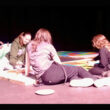Sean C. Morgan
Sweet Home High School requires students to maintain a 3.50 GPA to qualify for an Honors Diploma and, until this year, they had to declare their intention to enter the program early in their high school career.
So what if a student starts getting serious about their schoolwork later than that and could qualify, but didn’t enter in time? Or what about students who aren’t maintaining the standard of excellence, such as one whose recent GPA was 1.85 – while other deserving individuals were shut out? Or, what if their class schedule prohibits otherwise students with perfect GPS from seeking an Honors Diploma?
All of those reasons have prompted the high school this year to alter its Honors Diploma to make the program more flexible, to even the playing field and to make the standards more rigorous.
A group of volunteer teachers are behind the changes. They started meeting as the “improvement committee” two years ago on their own time, said Chris Hiaasen, dean of students, so they could focus on ways to improve Sweet Home High School.
During a retreat, 16 teachers identified two specific areas of concern, staff retention and student rigor, after brainstorming and throwing out any and every idea they could.
To begin addressing the first, they began a welcome program that included a tour of the community. Volunteer teachers check with the new teacher in the classroom to make sure the new teacher has everything needed. The teachers provide an orientation and lunch at the lake.
Addressing the rigor issue, they suggested some changes to the Honors Diploma, which took effect beginning this year.
The Honors Diploma is one of many factors that impact students as they go on to college.
All things being equal, it could give a student the edge for a competitive scholarship, said high school Counselor Julie Harvey. Honors diplomas should be meeting automatic enrollment requirements at colleges across the country.
“It’s important to have something to strive for, and an Honors Diploma is more challenging than a regular diploma,” Harvey said.
The teacher who put the Honors Diploma up on the board during the retreat explained that students must declare as sophomores that they’re going to take honors classes in pursuit of an Honors Diploma, Hiaasen said. That teacher described a girl who was nearing the end of her sophomore year and doing well, but she had no way to enter the honors program at that point.
The solution was to streamline it and allow students who are meeting requirements to enter it as late as their junior year, Hiaasen said.
But that wasn’t everything.
“We had honors classes that failed to be significantly different than a non-honors class in context or difficulty,” Hiaasen said, and the classes tended to be attractive to certain kinds of students.
Principal Ralph Brown said administrators asked the staff and the kids with the honors classes how different they were from regular classes. They were told there wasn’t a lot of difference.
“I believe strongly in honors classes,” Brown said. To him they are supposed to be college prep classes, and they are supposed to be the highest level of classwork.
The previous honors program also created divides among students, separating them exclusively into those who were in or out of the program, Hiaasen said.
Some students who enter the honors program perform significantly below the level, 3.5 GPA, needed to qualify for an Honors Diploma, while the program locked honors students out of other programs and other students out of the honors program, Hiaasen said.
Honors students couldn’t take desktop publishing or be involved in Leadership.
Brown described a student who had to make a choice between honors English or yearbook. This particular student was running a 4.0 or near-4.0 GPA, a student more than capable of earning an Honors Diploma but who would be unable to based simply on a scheduling conflict.
“We want them to be much more involved,” Brown said. “We don’t want them locked out because they couldn’t access an honors class.”
The high school had students who would avoid honors classes, Brown said, because they didn’t think they were “honors students” even though they might discover later they are perfectly capable of that kind of academic success.
The biggest changes address the scheduling and rigor issue by opening up a longer list of advanced classes to all students.
The new system takes the pressure off of those students, Brown said, because they’re all honors students if they’re doing the work. Even freshmen can get in on it if they’re taking advanced classes.
To develop an extended list of classes that qualify students for the Honors Diploma, the committee members asked themselves what in different departments they could do to go significantly above and beyond standard coursework, Hiaasen said. For English, it was college classwork in high school. For social studies, it was to continue advanced placement classes. In math, it meant pre-calculus. Generally speaking, advanced classes across the schedule can qualify students for an Honors Diploma.
To be an honors student, it means getting a B or better in advanced classes while maintaining an overall 3.5 GPA, Hiaasen said. Under the old system, a student could get a D in a class and still reach a 3.5 GPA, earning an Honors Diploma. That was rare, but possible.
Previous students attended specific “honors classes” and had a limited number of choices, Hiaasen said. Now anyone can take them, creating flexibility for those who were locked out based on their schedules or for social reasons. Students are no longer locked in or out of the program as sophomores.
“We’re trying to level the playing field,” Hiaasen said, and it is no longer “exclusive.”
“It’s more rigorous, but it’s still more inclusive,” Brown said.
“So far, it’s worked well,” Hiaasen said. The school is phasing it in to avoid disrupting students who were already in the honors program.
Hiaasen said she is thankful that the teachers have an opportunity to get together and make changes like these.
“We’ve got a lot of smart, good people,” Brown said, and the committee is a good grassroots effort to make school better for the kids.




